The hybrid office is being promoted as the future of work. In a hybrid office setting, employees split their time between working in the office and working from home. Now that many employees have been working remotely during the pandemic, the pressure is on to figure out the best way to bring them back to work in the office.
Getting employees back will require making the office an attractive place to work. In the sections below, I will address how to make the workplace a desirable destination.
Why Do We Need the Office?
I have worked with organizations that are embracing a hybrid office model and others that want their organizations to function the same way they did before the pandemic. The latter includes having all employees back to the office full-time.
Some organizations expect employees to come back to the workplace based on tradition. I suspect they will lose some talented people because of the flexibility and independence that remote workers have gained during the pandemic.
For those organizations considering a hybrid model, the typical reasons for wanting in-person office space include developing culture, connectivity, and collaboration.
- Culture - Bringing people together in the office enables the norms and values of the culture to be transferred faster than through remote work. This includes learning the preferred ways of communicating, the attitudes about the work, the way employees dress and interact, etc.
- Connectivity - Having people in an office work environment leads to human connection in ways that cannot take place via videoconferencing. On a videoconference, you cannot always read someone’s body language to tell if they are happy or upset. As humans, we thrive on connection and there is no better way to connect with each other than being face to face.
- Collaboration - Being together in the office leads to collaboration, whether in a more formal meeting or informally in the break room. Many believe that random exchanges and spontaneous “collisions” between employees promote innovation, which organizations strive to nurture.
Based on the points above, there are some very legitimate reasons to promote a post-pandemic return to the workplace. But how should the workplace be designed to promote culture, connectivity, and collaboration? We will examine this issue below.
Employee-Centric Workplace Design
To help employees return to the office, many hybrid workplaces are incorporating an employee-centric design. What does that mean? Instead of traditionally designing the office environment to promote the activities being performed, an employee-centric design promotes the experience of the employees. The experience is essentially how the workplace makes the employees feel.
The following aspects promote a positive employee experience:
- Wellness - Given the impact of the pandemic, everyone is concerned about health. Make workplaces healthy by providing daylighting, fresh air circulation, surfaces that are easy to clean (even antimicrobial), and touchless features.
- Technology – Implement a reservation system to book workstations and conference rooms. Have ample collaboration areas with the latest technology for presentations and videoconferences. Enable Wi-Fi so that employees can move about the office as they work. Have access cards that provide a level of security to both access the physical space and the technology.
- Biophilia - Bring nature into the office by offering expansive views from the windows, using natural construction materials, and having ample indoor plants. Many offices are also promoting outdoor areas where employees can work from patios and gardens.
- Mix of Spaces – Have open workstations (not tightly packed together), cubicles with higher partitions, and walled offices (preferably demountable walls). Ensure a mix of collaboration areas from formal conference rooms to informal lounge seating and break rooms. Provide spaces where employees can work interactively and spaces where they can find respite and quiet to concentrate on work.
- Adaptable Workplaces – Offer the flexibility to change different aspects of the workspace such as adjusting the desk chairs, workstation height, lighting, and temperature. Control over the surroundings can lessen stress and enhance performance.
- Touch of Home – Furnish lounge areas with couches, oversized chairs, and home décor to help employees gather comfortably with team members.
The points above are all designed to provide employees with more comfort, control, and flexibility. These features contribute to making the workplace a desired destination.
Layout the Workplace as a Destination
The aspects of an employee-centric workplace go a long way toward creating an inviting destination where employees will want to work.
What makes a workplace destination? To me, the destination is very much the feel of the workplace and how it promotes the culture. The right layout will energize employees and provide a sense of unified purpose. Here are some suggestions to further promote a destination:
- Branding – Prominently display your organization’s branding and colors, especially near the entrance and in gathering areas.
- Organization of the Layout – Have an organization to the workplace that promotes an intended purpose. I am a big fan of the Eudaimonia Machine as an example of organizing space from very social and collaborative areas to quiet spaces that enable concentration and deep thought.
- Spontaneous Meetings – Consider placing an informal lounge or break area near the workplace entrance. As employees embrace hybrid working, they may come and go on different schedules. Having a social area toward the front of the office can promote connectivity as employees intermingle when arriving and departing.
- Quiet Spaces - Both introverts and extroverts require quiet spaces to recharge their batteries and to perform focused work. Ensure that there are enough quiet spaces and workstations in the office. This means more than just several getaway booths around the perimeter of an open office. Consider providing quiet spaces for 25% to 50% of the employees that will be at the office on an average workday.
When combining the above points on layout with the features of a human-centric design, your workplace will be enticing to employees.
Think Club, Not Office
I have heard the new destination workplace described more like a club and less like an office. Though loud music and flashing lights will probably not be productive for work, this analogy describes the feeling you want employees to have when they enter the workplace. Ideally, employees will be excited, motivated, and ready to connect with their co-workers.
The emphasis on destination design is all about the experience. Following the points above can help organizations determine the best experience to optimize their workplaces for returning employees.
_______________________________________________________________________






.jpg)
.jpg)
.jpg)
.jpg)
.jpg)
.jpg)


.jpg)
.jpg)
-1.jpg)
.jpg)
.jpg)
.jpg)
.jpg)
.jpg)

